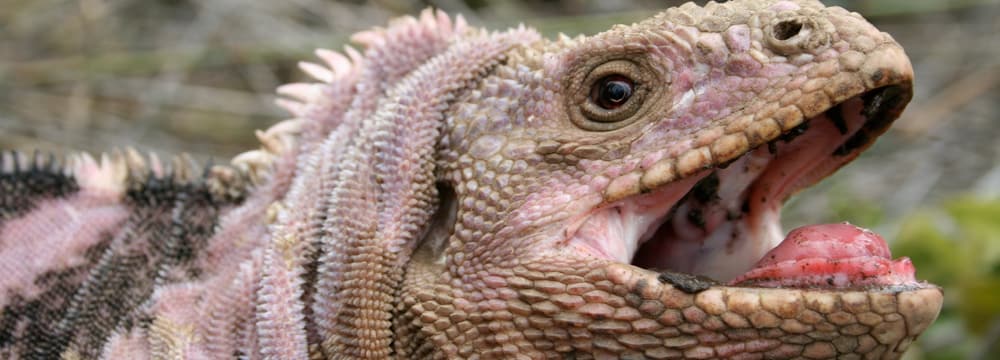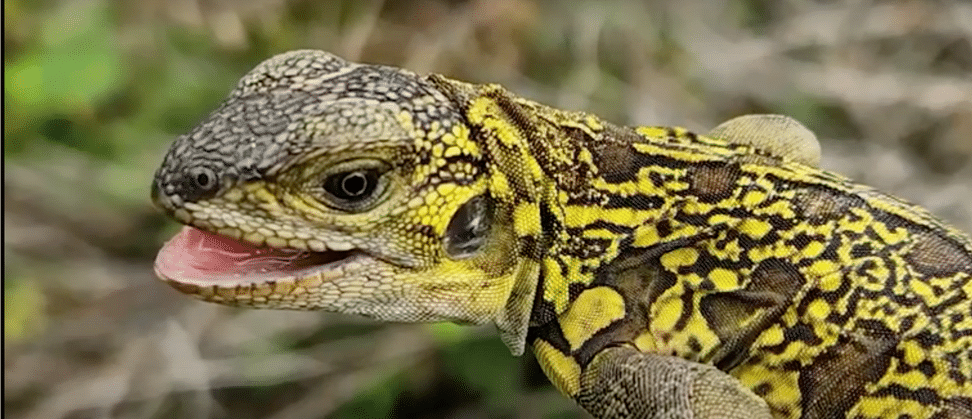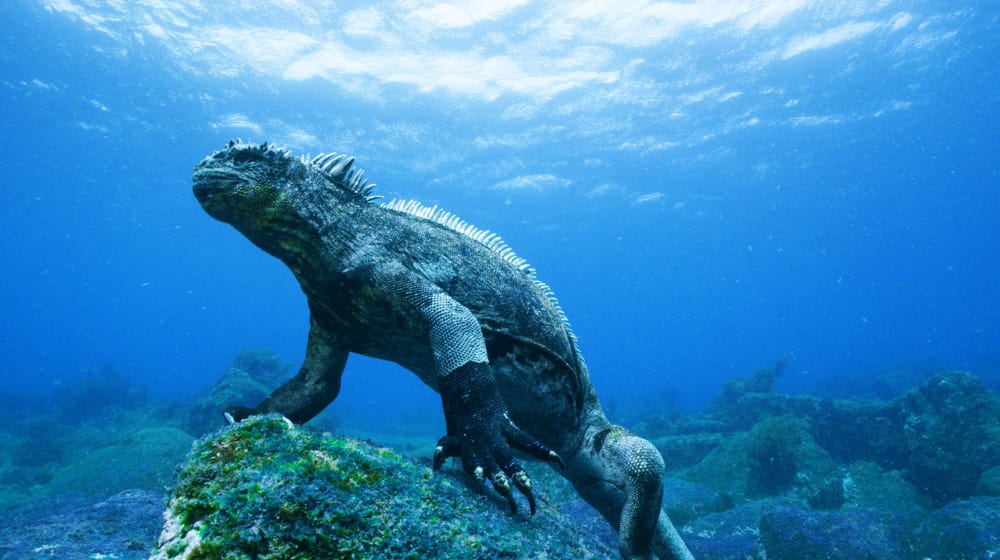
First pictures of juveniles of the Pink Iguana
It is a small sensation. For the first time, researcher Dr. Jorge Carrión has succeeded in discovering and photographing young Pink Iguana.
A team of researchers and rangers from the Galápagos National Park Authority (GNPD) had placed well-hidden wildlife cameras and photo traps around the rim of Wolf Volcano on Isabela Island several years ago. Their goal was to observe the activities of the resident and extremely rare Pink Iguanas (Conolophus marthae) and to determine their breeding sites.
The population of Pink Iguanas is estimated at 200 - 300 animals and is therefore listed on the Red List of the World Conservation Union (IUCN) as threatened with extinction. The pink skin color of iguanas occurs because blood vessels show through the animals' partially non-pigmented skin.
In the middle of 2021, Dr. Gabriele Gentile succeeded in locating the first nesting sites of rare animals. We already reported on this in the fall of 2021. During another expedition to the Wolf Volcano, the researcher Dr. Jorge Carrión was then even able to catch a young iguana, which was visually different from the known young animals. The animal had green skin, a long tail, and a short snout. Detailed examinations then showed that it was indeed a juvenile of the Pink Iguana.
Even more, was the joy when the researchers during a reconnaissance of the nesting sites came across a clutch of eggs in which young iguanas were just hatching. Thus, the first pictures of freshly hatched young Pink Iguanas could be taken.
Of concern, however, was that the photo traps made it obvious how feral cats gather in front of iguana nests and kill the young iguanas when they try to leave the nest.
The researchers, therefore, suspect that these invasive cats are the reason why the population of Pink Iguanas has stagnated over the past 10 years.
A permanently staffed research station established on the rim of the Wolf Volcano will now ensure that the nesting sites are protected from poaching animals and wildlife trappers.
We are very happy that there are new findings about these rare animals and thus the long-term securing of their survival seems realistic.

Young Pink Iguana © GNPD/Galápagos Conservancy
